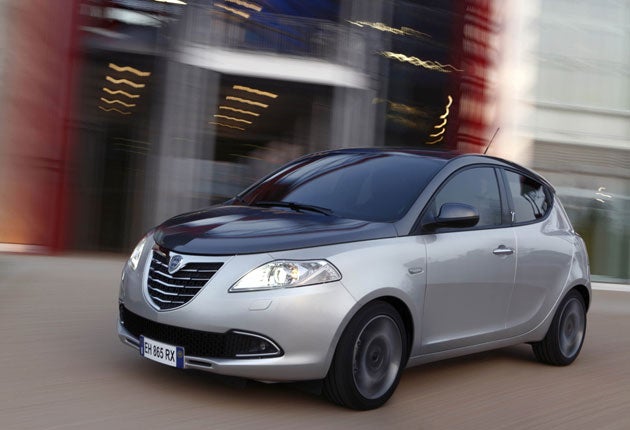Lancia Ypsilon
It may have a bewilidering family tree, but the new Ypsilon is still a likeable little car

This is almost a momentous occasion.
Here is a brand new Lancia, and it's coming to the UK in September. The last time we had new Lancias here was in 1994, so they have been gone a long time. We should be pleased. Except the upcoming event isn't quite what it seems. After all, would you, as a regular member of the British car-buying public, purchase a new Lancia? Thought not. The name might be steeped in history, but nowadays there are few of us who appreciate that past. For most people Lancia is a dead brand in Britain.
So the Ypsilon mini-car you see here, and the larger Delta which arrives here at the same time but is now two years old, might be the perfect opportunity to relaunch this luxury-flavoured marque in the UK and take advantage of buyers' current appetite for premium product in a compact package. Such a plan was indeed poised for implementation shortly after the Delta's launch, but then the fiscal crisis came and the plan fizzled out.
Then something unexpected happened. Chrysler, the smallest of the Big Three US car corporations, ran right out of money. Fiat, already looking to re-enter the US market with Alfa Romeo and the Fiat 500, came to the rescue and now effectively controls Chrysler. It has paid back the US government loan and is on track to gain a majority shareholding.
So here's the new plan. Chrysler has a presence in Europe with two large cars, the Voyager MPV and the 300C, a square-cut saloon. It has no compact cars, and hasn't had since the demise of the retro-pastiche PT Cruiser and the cheap'n'nasty Neon. Today's Chrysler products tend, strangely, to do better in right-hand drive markets, the US and Canada excepted of course.
So, outside North America the Lancia and Chrysler ranges are to be merged, with the badge on the grille dependent upon the steering wheel's position on left or right. Our new Ypsilon, therefore, will be a Chrysler, mainland Europe's will be a Lancia, and two identical cars will now be marketed as though sprung from entirely different loins.
Does it matter? One feels it should, but the truth is that most buyers take a shallower view. If a car looks good, suggests an association with a lush mode of life, and has an iPod and BlueTooth connection, then that's probably enough. So, realistically, we must judge our Chrysler Ypsilon not on the badge it wears, nor on the inconvenient truth that it's conceived in Italy, made in Poland, and bears an expedient American brand name, but on whether it's a desirable object in itself.
The Ypsilon is a neat-looking little car, obviously a visual evolution of the previous model and of other Lancias, and unique in combining five doors with upmarket intent. The rear door handles are concealed to create a faux three-door look, and two-tone paint finishes and various leather seat trims are offered. Under its skin lies the structure and mechanical parts of a current Fiat 500 with an extra 90mm inserted in the wheelbase, resulting in a roomier rear cabin but no improvement in headroom. The engine range, too, is that of the 500 apart from the powerful 1.4-litre units.
The most interesting engine, as with the Fiat, is the little two-cylinder, 875cc, turbocharged TwinAir which has recently won the prestigious industry Engine of the Year award. It is certainly a punchy, enthusiastic engine, and potentially very economical if its driver resists the temptation to use that enthusiasm all the time.
In other respects, too, the Ypsilon feels like a bigger, slower-witted, more grown-up 500, with prices ranging from £10,700 to £16,000. Its "premiumness" doesn't run deep, however, with much hard plastic in the cabin. In that respect, at least, the Ypsilon is true to its adopted Chrysler name so perhaps it's more authentic than I first thought. That doesn't stop it from being a likeable little car, but I'm glad I'm not the one who has to devise the marketing campaign.
The Rivals
Audi A1 1.2 SE: £13,420 – 85bhp, 118g/km
Reproduces Audi "premium" qualities in miniature. It's a posh Polo with more driving sparkle.
Fiat 500 TwinAir Lounge: £12,265 – 85bhp, 95g/km
Mechanically the same as Ypsilon but full of brand authenticity. Cheekier character than Ypsilon, more fun.
Mini One: from £13,400 – 98bhp, 127g/km
Original premium small car, here in relatively cheap guise but still more power than rivals. Fun to drive, lots of character, huge following.
Join our commenting forum
Join thought-provoking conversations, follow other Independent readers and see their replies
Comments
Bookmark popover
Removed from bookmarks